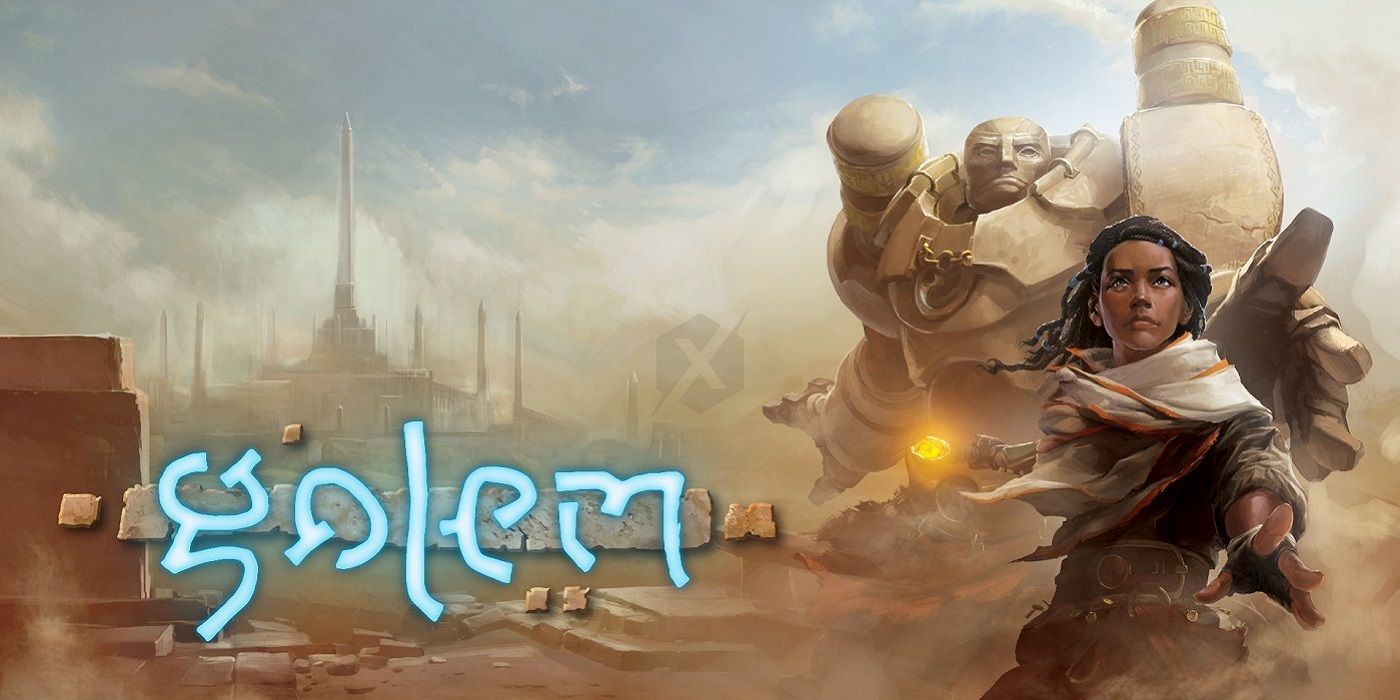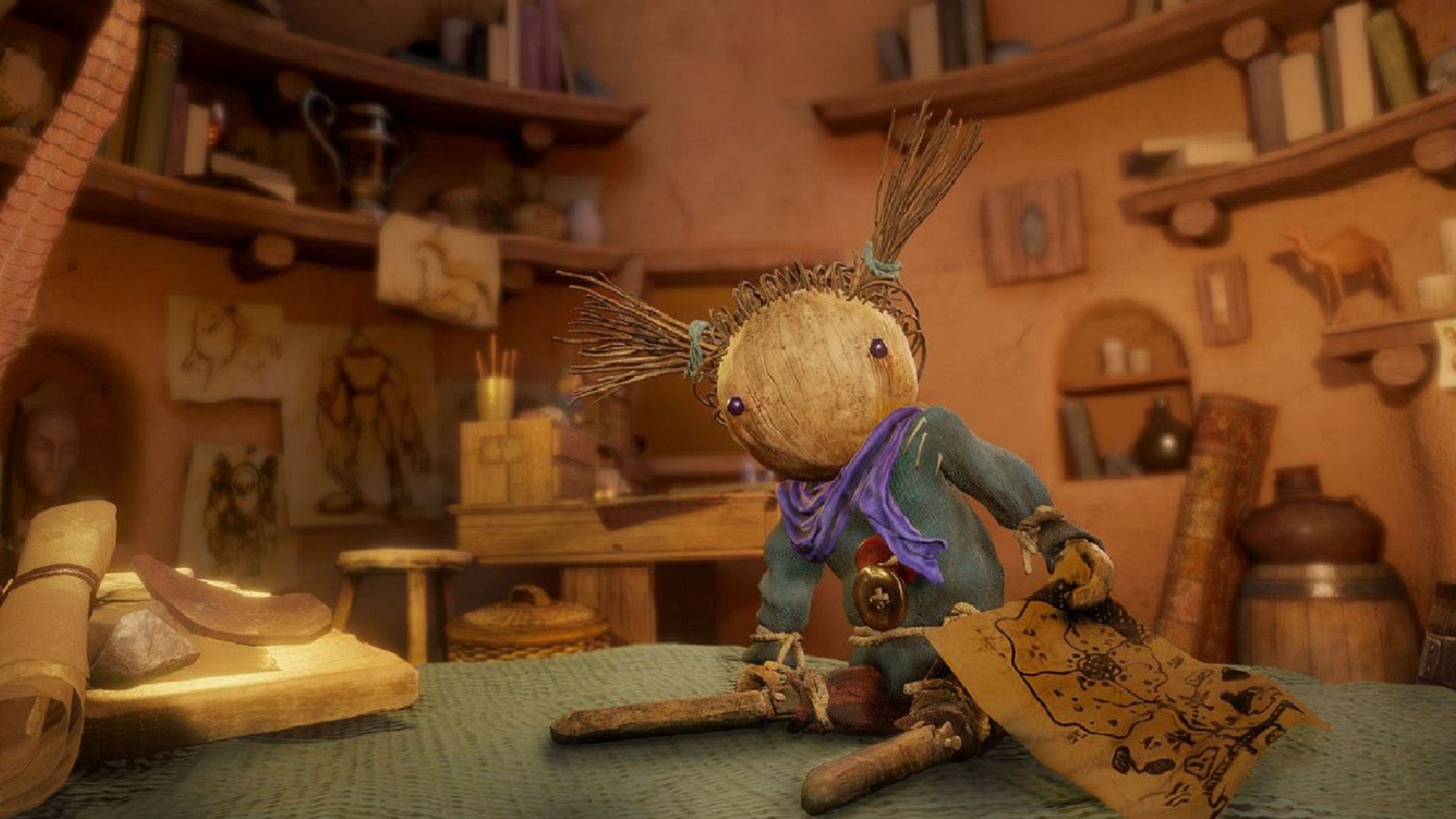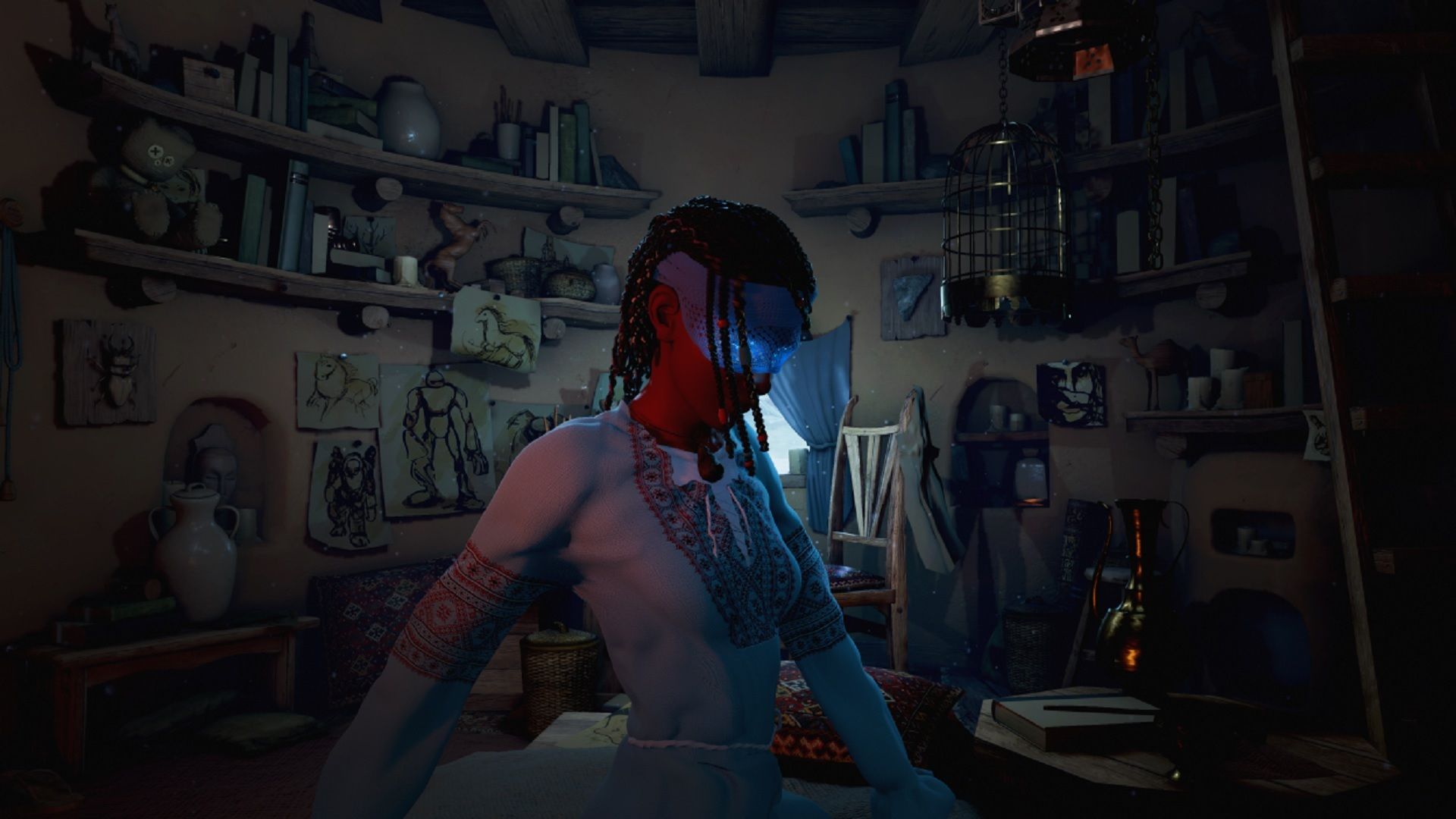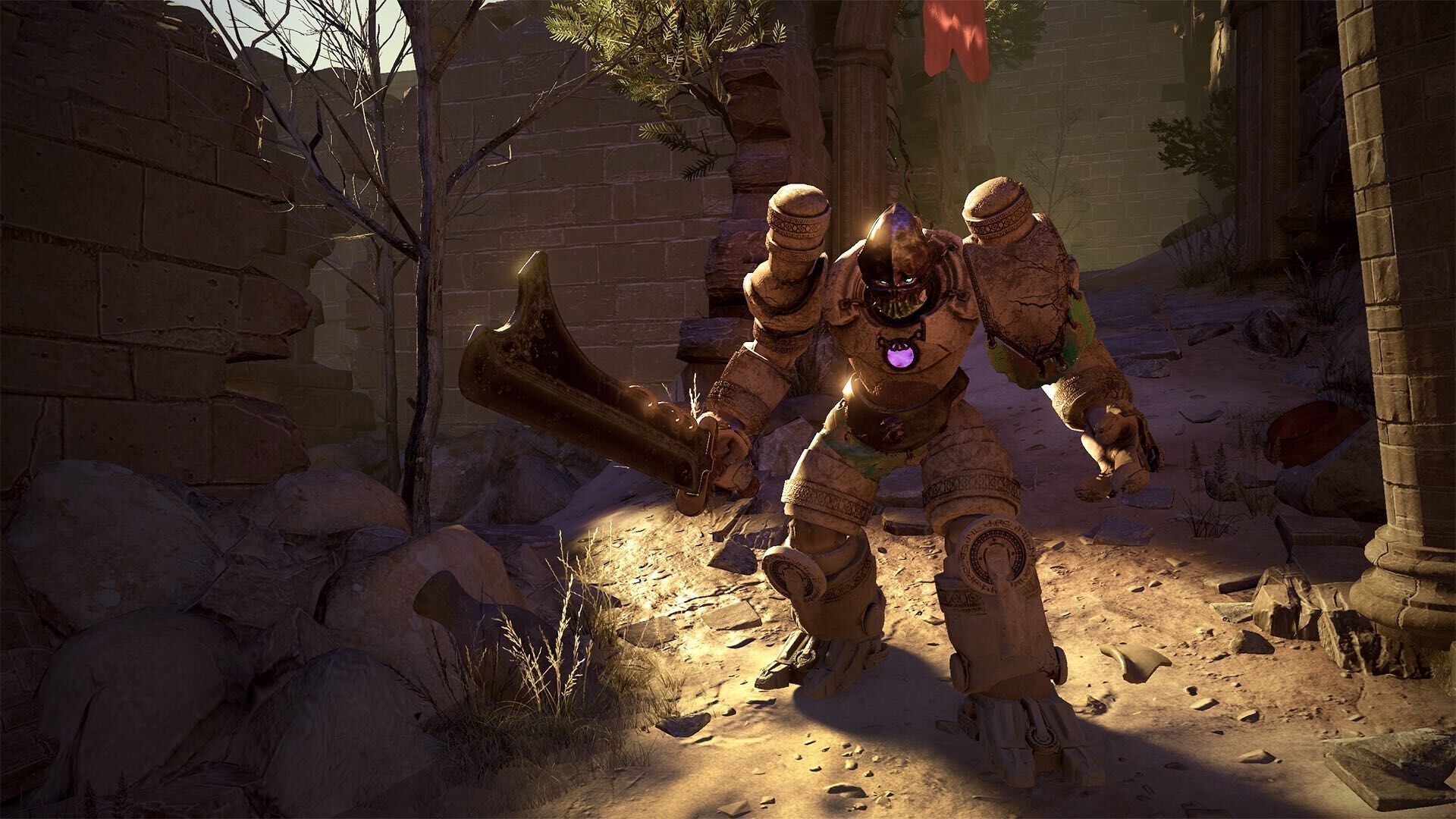In 2015, former Bungie developers that worked on games like Destiny and Halo announced the formation of a new studio called Highwire Games. Since Destiny and Halo are both hugely popular FPS franchises, it would be hard to fault fans for assuming that the first title from Highwire Games would follow in their footsteps, but instead Highwire set to work on something completely different. Revealed at the 2015 PlayStation Experience event, the first title from Highwire Games is Golem, an ambitious virtual reality title exclusive to PlayStation VR. Golem comes from a team of proven and highly talented individuals, but to say it fails to live up to expectations would be an understatement.
Golem plays like a VR game that would have come out around the launch of PlayStation VR or the Oculus Rift. It doesn't feature any of the real advancements that have been made in virtual reality in the years since its initial reveal, and this is apparent right off the bat. For example, a cardinal sin that many early VR games made was start off with long cut-scenes that have players do nothing but watch the game happen around them, and Golem is guilty of this. It takes about 20 minutes for the actual game to start, which is a long time to be sitting there with the PlayStation VR headset strapped on and not really doing anything.
Golem spends a lot of time setting up its story, which sees players in the role of a young girl named Twine, who lives with her father and adventurous older sister. Twine's sister takes her to some forbidden ruins, which are blocked off by a magical field that only ancient Golems can pass through. Twine's sister reveals her ability to control these Golems, though she is attacked by one and Twine is also injured in the process.
When Twine comes to, she is told by her father that her legs are injured and she won't be able to walk. This is meant to be an emotional moment, but the problem is Golem never let Twine walk to begin with. The 20 minutes of cut-scenes that preceded this moment were all spent with Twine just sitting still, not interacting with anyone or anything or even making a single sound. This robs what is a potentially emotional moment of any impact it would have had otherwise. It just doesn't land at all.
The drama around Twine does manage to resonate a bit, as Golem has some solid voice performances. The well-written dialogue and performances by the voice actors made the scenes following the incident with Twine's sister have some weight to them. The narrative in general improves after these opening sequences, as players are let loose to explore a strange, ruinous world that is reminiscent of games like Ico and even FromSoftware's Souls series. Players can collect "Echos" in the game world that add more context to what they're doing and expand on the story, which we found enjoyable.
Learning more about Golem's world is one of the few things players will like about the game, but it has some other notable qualities as well. As far as PlayStation VR games go, Golem is one of the better-looking ones available, with a sharper draw distance than PSVR users may be used to in their games. Golem's musical score is also quite good, but that's to be expected with former Halo and Destiny composer Marty O'Donnell at the helm. There may not be anything quite as memorable as the Halo theme, but Golem's music is still leagues ahead of the music in many other games.
Golem has great music and graphics along with an interesting story and game world, but actually playing the game is not only not fun, it's sometimes physically agonizing. There are a few different reasons why Golem may be too uncomfortable for some people to play, but the biggest issue is its default control scheme. To move in Golem, players have to lean forward, and while this may not sound like a terrible idea on paper, in practice it can be very uncomfortable, especially for extended play sessions. It doesn't help that the PlayStation VR doesn't always register when players are leaning forward, so sometimes they may find themselves practically falling out of their chair just to get their character in the game to move. There's luckily an option in Golem to control the character using a DualShock 4 in one hand and a PlayStation Move controller in the other, and playing the game this way is infinitely better.
Unfortunately, Golem's controls aren't the only reason why the game can be uncomfortable to play. Another major reason is that the simple act of looking around is nauseating, and not due to the VR, but a specific design decision by the developers. Since Twine is technically still sitting in her room throughout this game while she's controlling her Golems, players can see the outline of her room in their peripheral vision. As players move around, the Golem's view shrinks to show more of Twine's room, and if they stop, they can see more of the Golem's view. So what ends up happening is players will be moving around and decide to look somewhere else, and the game switches between the two viewpoints in a stomach-lurching way.
There's nothing of note going on in Twine's vision anyway, and if this were removed, Golem would be a far more tolerable experience. However, this issue isn't the only thing that may cause players to experience some motion sickness when playing Golem. We also ran into some technical issues where the head-tracking would go nuts, with our view becoming disconnected from both Twine and the Golem. This caused the camera to jerk violently from side to side and made us feel sick.
Other people may experience motion sickness in VR games because of how fast-paced they are, like in Insomniac's Stormland, but Golem's motion sickness comes from camera problems and baffling design choices. Even if these things weren't an issue in Golem, though, its minute to minute gameplay is also lacking.
Golem has players explore fairly large environments, but in the body of a huge stone creature that moves painfully slow. There's also a great deal of backtracking and wandering aimlessly that players will have to contend with whenever they get stuck, which combined with the Golem's slow movement can make playing Golem more frustrating than anything else. The game just lacks direction, and while that seems to have been done on purpose, it just doesn't work with how slow the Golem moves. Players will feel discouraged from really doing much exploring because of it.
While players are slowly marching around Golem's game world, they will encounter some basic puzzles to solve and some enemies to fight. Golems are equipped with a variety of melee weapons, and the combat in the game is one of its better bits, though still imperfect. It's a basic system of blocking enemy attacks and then hitting them when there's an opening, but like the movement, it can be slow and tedious. This is especially true when fighting enemies that take five or more hits to take down, as players can only deal damage when the game allows them to do so. If players aren't perfectly positioned and the enemy misses with their attack instead of it being blocked, Golem players will find themselves waiting for the enemy to go through the same attack sequences again.
By defeating enemy Golems, players can collect new weapons, items, and armor. Collecting new gear and improving one's Golem can be fun, but it too has a big catch that makes it far less worthwhile. In order to equip anything in Golem, players have to back out to the Workshop, and when they return to the game world, they won't be where they were before they left. This means even more backtracking in the slow moving Golem, not to mention players getting lost trying to find the way back to wherever it was that they needed to be.
It's a shame that Golem's gameplay falls so short because its graphics, music, and story are quite good. But even with these highlights, the issues with Golem's gameplay makes it impossible to recommend. Golem was once one of our most anticipated virtual reality games, but VR fans would be better off playing basically anything else.
Golem is out now for PlayStation VR.





